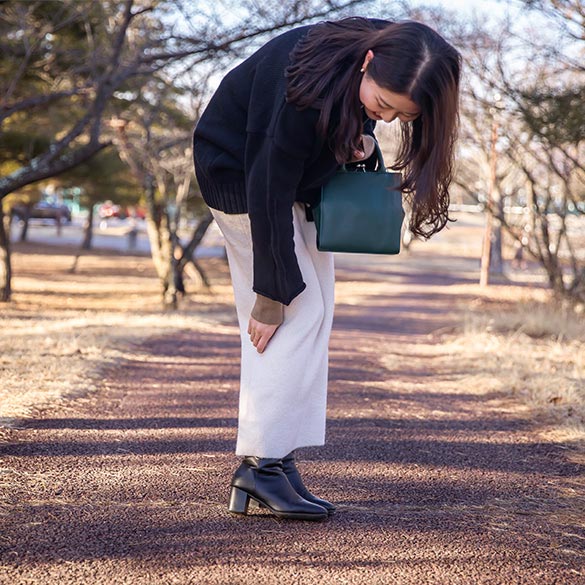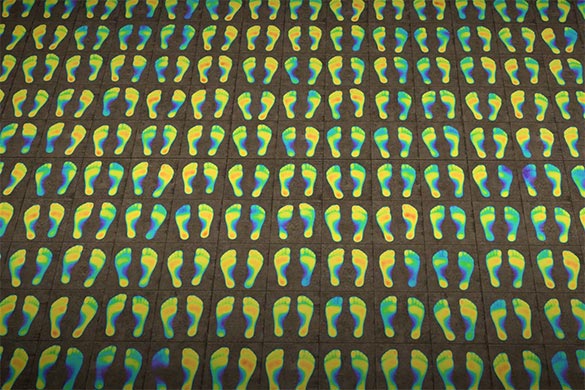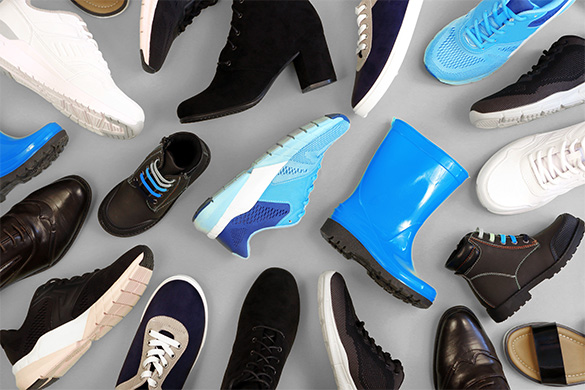Why Footwear Brands Are Investing in the Insole Experience
Footwear should be experienced – and footwear experience design trends include a thoughtful insole selection to ensure comfort, performance, and support.

Shoes are typically designed, developed, and sold with a specific use case in mind—a casual sneaker for laid-back weekends, a commuter shoe built for comfort, rugged boots for hikes and rough terrain, or sleek flats for perusing shops in the city. But once your shoes leave the store, they enter the real world, where life (rarely) goes to plan, and whatever type of cushioned shoe insoles were used go along for the ride.
Despite any specific use case, there are a lot of instances in daily life where consumers use their shoes differently than intended, perhaps putting more impact or wear and tear on them than they were designed to handle. Your customer may run a quarter mile down the street because they’re late to catch the bus. They might speed-walk several blocks in their stylish flats during a downpour. A walk alongside their bike-riding child might turn into a light jog. A leisurely outdoor walk might go longer and have rougher terrain than anticipated. In these unscripted moments, the right cushioned shoe insoles can make the difference between discomfort and performance.
Your average customer is doing a lot of different things every day—and they expect their footwear to keep up. They’re less likely to carry multiple pairs of shoes to change into for different activities (like walking to work vs being at work) and more likely to wear one versatile pair across use cases. That means casual sneakers might become light running shoes. Dressier shoes might serve as all-day footwear. Sandals might double as errand-runners or vacation walkers.
Footwear often gets used outside its original intent, but shoe brands can deliver designs that accommodate those multiple uses. The key is the insole.
When shoes are used for more high-impact or prolonged activities than originally designed, the stress on the body increases. Without proper support, customers may experience foot fatigue, arch pain, or pain in their knees, hips, or back.
It will always be important for people to wear the proper shoes for a specific activity, but in unintended situations, a well-cushioned insole mitigates those risks. Whether it’s absorbing shock during a surprise sprint or distributing pressure over a long commute, the right insole can help a shoe rise to the challenge—even when it wasn’t part of the plan.

At INSITE, we believe great footwear design includes planning for the unplanned. Our data-driven insole technology is built not just for designated performance but for real-life versatility. Here’s how we help you future-proof your footwear:

We use high-fidelity digital pressure-mapping data as part of our ProvenComfort® testing to inform insole designs that deliver support where it’s needed most, delivering optimal cushioning in high-impact zones that works for both planned and unexpected activity.

Our Contoura® insole designs promote healthy biomechanics and natural foot alignment, helping your customers feel supported even when their activity levels shift. From walking to light running, our insoles reduce fatigue and improve comfort the whole time.

Our insoles are designed to fit across footwear types without sacrificing intent. Whether you’re designing flats, lifestyle sneakers, or hybrid workwear, you don’t have to choose between aesthetics and performance.
The reality is, outside of very specialized footwear, there is rarely a single activity footwear is used for. Today’s consumers want shoes that are ready for anything—and footwear brands that meet this need build trust, loyalty, and repeat customers.
By integrating high-performance, cushioned insoles into your footwear designs, you enable the flexibility to succeed beyond the original scope. Whether it’s a quick jog, a long commute, or an unexpected adventure, your shoes will be ready—because you designed for the unplanned.
Footwear should be experienced – and footwear experience design trends include a thoughtful insole selection to ensure comfort, performance, and support.
How do you strike a balance between sustainability and performance when it comes to footwear materials? INSITE® Director of Research & Design Justin Ter Har recently answered this question at the FDRA Sustainability & Innovation Summit in Portland, OR in September.
Orthotics have many benefits, and orthotic-inspired insoles allow footwear brands to deliver those benefits right out of the box.